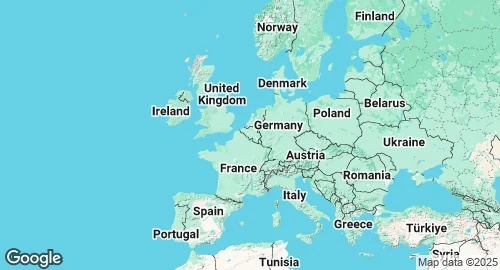Belgium Military Forces 🇧🇪
Military Strength Overview
| 🛩️ Air Force | 108 active aircraft |
| ⚓️ Naval forces | 9 ships in fleet |
| ☢️ Nuclear Deployment | Hosting 20 warheads |
| 🪖 Active Troops | 26,300 personnels |
| ⛑️ Reserve Troops | 5,100 personnels |
| 🎖️ Military ranks | 72 ranks listed |
Defense Statistics & Key Metrics
| Population | 11.8 million (2023) |
| GDP | $644.8 billion (2023) |
| GDP per capita | $54701 (2023) |
| Military Budget | $8.6 billion (2024) |
| Share of GDP in Milex | 1.3% (2024) |
| Share of Govt Expenditures | 2.4% (2024) |
| Military spends per capita | $730 (2024) |
| Inflation Rate | 3.14% (2024) |
| Military Personnel | 24,000 (2020) |
Strategic Overview in 2025
Belgium's military, while modest in size, is a modern and professional force undergoing significant transformation to enhance its role within NATO and the European Union. Its strategic posture is defined by its deep integration into collective defense frameworks and its position as a key logistical hub in Europe. The Belgian government is actively addressing historical underinvestment through a strategic plan, though challenges in capabilities and spending persist.
Force Structure & Capabilities
The Belgian Armed Forces are composed of four primary components: Land, Air, Naval, and Medical. A fifth component, the Cyber Command, was established in 2022 to address contemporary security threats. As of 2024, the total active personnel stands at approximately 26,105, with efforts underway to reverse a previous decline in numbers through recruitment drives.
Modernization is guided by the STAR plan (Security & Service, Technology, Ambition, Resilience), which directs investments towards upgrading equipment and enhancing operational readiness. Key acquisitions include the F-35A Lightning II fighter jets, which are replacing the aging F-16 fleet, MQ-9B SkyGuardian drones for surveillance, and A400M transport aircraft operated in conjunction with Luxembourg. The Land Component is also being modernized, with the introduction of Piranha 5 infantry fighting vehicles. The Naval Component contributes to international maritime security, with frigates participating in missions in the Red Sea and the Strait of Hormuz.
Strategic Trends & Geopolitical Position
Belgium's defense strategy is intrinsically linked to its commitments to NATO and the EU. The country hosts key institutions of both organizations, making its stability crucial for European security. In response to Russia's increased assertiveness, Belgium has reinforced its contributions to NATO's collective defense, deploying troops to multinational battlegroups in Romania and Lithuania.
A primary strategic challenge remains defense spending. While the budget is increasing, aiming for 1.5% of GDP by 2030, it still falls short of the 2% NATO target. However, Belgium does meet the alliance's goal of allocating at least 20% of defense expenditures to new equipment.
Future strategy, outlined in the STAR plan and the Belgian Defence, Industry and Research Strategy (DIRS), emphasizes enhanced interoperability, dual-use capabilities (civilian and military), and the development of a European strategic autonomy. There is a recognized need to address capability gaps, particularly in the land component's fire support and air defense systems, to meet NATO expectations for a fully operational motorized brigade.
Belgian Military Budget History
Population and Military Personnel Trends
GDP and Inflation Rate Trends
Belgian Firearms Development
| Model | Category |
|---|---|
| FNC / Pindad SS1 | Assault rifle |
| FAL | Assault rifle |
| SCAR | Assault rifle |
| F2000 / FS2000 | Bullpup assault rifle |
| M249 Minimi | Light machine gun |
| M240 / FN MAG | Light machine gun |
| BRG-15 | Machine gun |
| Hi-Power HP-35 | Semi-automatic pistol |
| FN "Five-seveN" | Semi-automatic pistol |
| FNAR | Sniper rifle |
| FAL Sniper | Sniper rifle |
| FN 30-11 | Sniper rifle |
| P-90 | Submachine gun |
Military Expenditure: SIPRI Milex.
